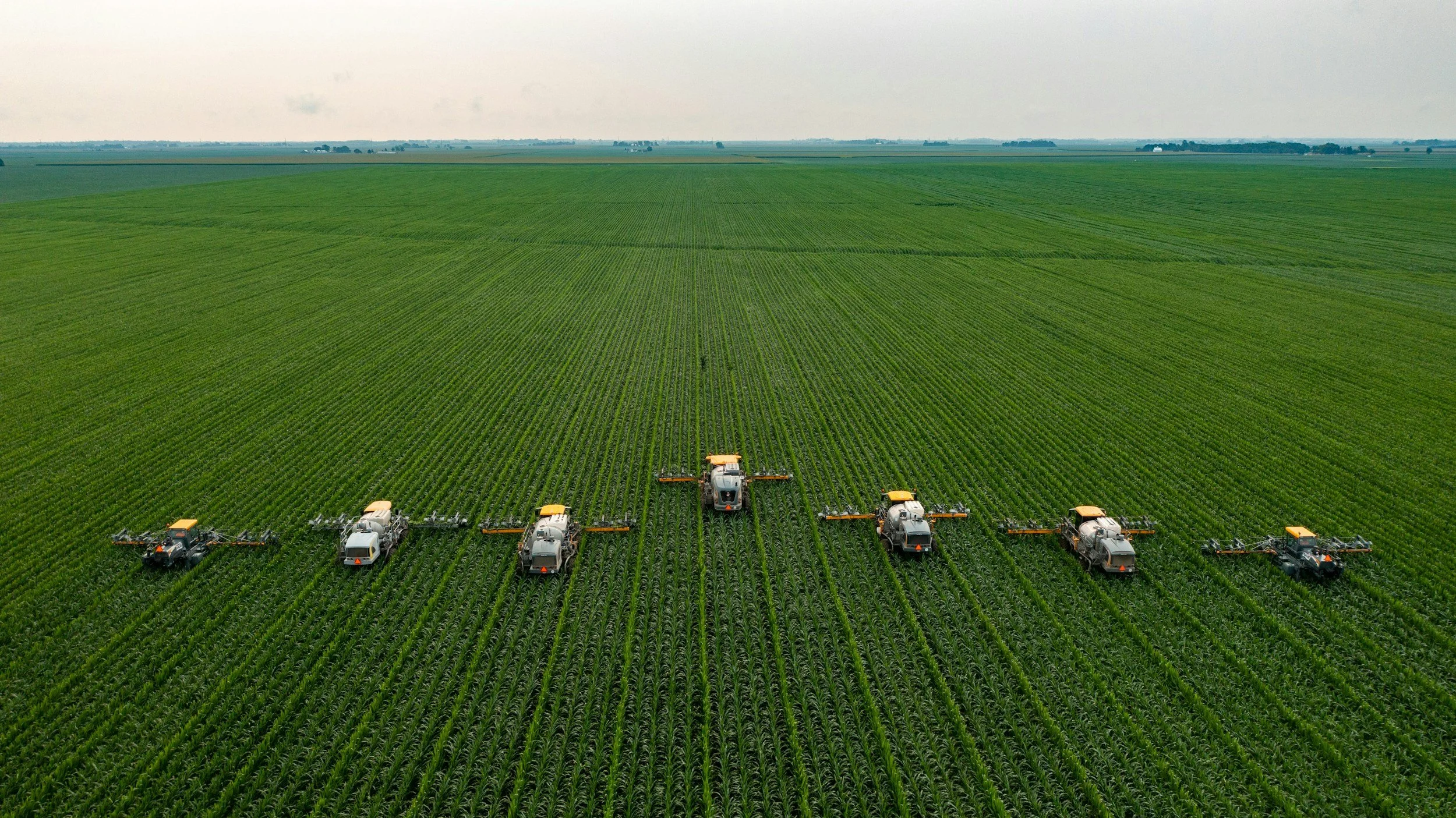What Are Anaerobic Digesters and How Do They Convert Waste into Energy?
/The world's garbage problem is growing. It's piling up fast, harming the planet. Landfills, a common way to handle trash, are overflowing. They pollute the environment and release harmful methane gas. Burning trash isn't much better. It also pollutes and wastes valuable resources that could be reused.
Anaerobic digesters offer a promising alternative. They're innovative devices that turn your trash into treasure. Specifically, they transform organic waste into clean energy. This addresses the downsides of traditional methods. It's a win-win for the environment and your budget.
This article examines the dynamics of anaerobic digesters. You'll discover how they work and their many benefits.
1. Understanding Anaerobic Digestion
Anaerobic digestion is a natural process where microorganisms, like bacteria, break down organic waste in a closed space without air. It's like composting, but instead of soil, it produces biogas.
The Anaerobic Digester
This special container has a few key parts. There's an opening for the waste to enter, called the feedstock intake. The main part is a large tank, the digester, where the breakdown happens. The biogas they produce gets collected. What's left is a nutrient-rich substance called digestate.
Types of Anaerobic Digesters
Anaerobic digesters come in different varieties. Some handle wet waste, others dry. Some work continuously, others in batches. The best type depends on what you're feeding it.
2. The Anaerobic Digestion Process
Before the breaking down process begins, the waste needs prepping. This involves sorting out non-organic materials, shredding large pieces, and mixing everything well. It's all about creating a palatable meal for the microbes.
Four Stages of Digestion
The digestion process has four main steps. First, complex materials break down into simpler ones. This is called hydrolysis. Then, different bacteria take over, producing acids and other compounds. This is acidogenesis. Next, these compounds turn into acetic acid, essential for the final step. This is acetogenesis. Finally, different bacteria transform acetic acid into methane, the star of biogas. This is methanogenesis.
Biogas Production and Composition
Biogas is mainly methane and carbon dioxide. Methane is the valuable part. It's a versatile fuel for electricity, heat, or even vehicles. Carbon dioxide is released or sometimes captured for other uses. For successful biogas production, you may want to seek the guidance of experienced contractors for tailored advice on what kind of anaerobic digestion plant you can install.
Digestate Production and Uses
The leftover digestate is like compost. It's rich in nutrients and perfect for fertilizing fields. It helps plants grow and closes the loop by returning resources to the earth.
3. Benefits of Anaerobic Digestion
Anaerobic digestion isn't just about waste. It's about creating energy. The biogas it produces is a renewable resource. It can power homes, businesses, and even vehicles. It's a clean alternative to fossil fuels.
Waste Reduction and Resource Recovery
Landfills are overflowing. Anaerobic digestion shrinks the waste significantly. It also transforms it into valuable resources. The digestate, a byproduct of the process, is a nutrient-rich fertilizer. It helps crops grow and improves soil health.
Environmental Advantages
Compared to landfills, anaerobic digestion drastically reduces greenhouse gas emissions, including methane. It also minimizes pollution and controls unpleasant odors. It's a greener way to manage waste.
Economic Benefits
Anaerobic digestion isn't just good for the planet - it's good for your wallet. Producing energy and fertilizer creates new revenue streams. It also cuts waste disposal costs. It's a smart investment for a sustainable future.
4. Applications of Anaerobic Digestion
Anaerobic digestion is a versatile technology with far-reaching applications in various sectors, transforming waste management and energy production. Below are some key areas where it's making a significant impact:
Agricultural Waste Management
Farms, a major source of organic waste, find a sustainable solution in anaerobic digestion. Manure, a nutrient-rich byproduct of livestock, and crop residues like corn stalks or straw, are ideal feedstock for digesters. The process not only reduces the environmental impact of these wastes but also generates renewable energy in the form of biogas.
This biogas can power farm operations, heat greenhouses, or be sold to the grid, providing an additional income stream for farmers. Additionally, the nutrient-rich digestate produced can be used as a natural fertilizer, improving soil health and reducing the need for synthetic fertilizers.
Municipal Solid Waste Treatment
Your everyday household waste, including food scraps, yard trimmings, and paper products, holds untapped energy potential. Many municipalities have recognized this and are implementing anaerobic digestion to divert organic waste from landfills. This approach significantly reduces the amount of waste sent to landfills, which are notorious for their greenhouse gas emissions.
Instead, this waste is transformed into biogas, a renewable energy source that can power homes and businesses. Additionally, the digestate produced can be used as a soil amendment, contributing to sustainable agriculture.
Wastewater Treatment
Wastewater treatment plants face the challenge of managing large volumes of sludge, a byproduct of the treatment process. Anaerobic digestion provides an efficient and environmentally friendly solution. It breaks down the organic matter in the sludge, reducing its volume and producing biogas as a valuable energy source.
This biogas can offset the plant's energy consumption, making it more self-sufficient and reducing operating costs. Moreover, the treated digestate is often safer and easier to dispose of than untreated sludge, minimizing environmental risks.
Industrial Applications
Many industries produce organic waste. Food processors, breweries, and others can use anaerobic digestion. It turns their waste into energy and reduces disposal costs. It's a sustainable solution for various sectors.
These diverse applications showcase the flexibility and potential of anaerobic digestion to revolutionize how waste is managed and energy is generated across different sectors.
like this? please pin using this image!
Conclusion
Anaerobic digestion offers a remarkable solution. It transforms organic waste into clean energy and valuable fertilizer. It's a versatile process with many benefits. It reduces waste, curbs pollution, and creates renewable resources. Its potential spans various sectors, from agriculture to industry.
The future of waste management is changing. Anaerobic digestion plays a crucial role. It aligns with the concept of a circular economy. It's where waste becomes a resource, not a burden. It's a key step towards sustainable living.
You can be part of this movement. Explore government programs that support anaerobic digestion. Seek advice from experts to assess its feasibility for you. Consider joining forces with others for community-scale projects. Together, you can turn waste into a valuable asset.
About the Author:
Passionate about sustainable solutions, Emily Green is a freelance writer specializing in environmental issues. She explores innovative technologies that tackle challenges like waste management and renewable energy. Her work aims to inform and inspire action towards a greener future.










































Proper pet waste disposal is crucial for maintaining healthy environments and ensuring clean, safe communities for human and animal residents alike. Unfortunately, still too many dog owners may not realize that when they leave any of their pet’s waste behind, it can accumulate and create both unpleasant and unhygienic conditions.